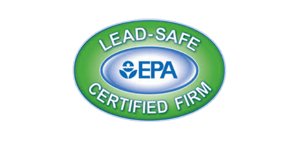Did you know mold can damage your home in just 24 to 48 hours after moisture exposure? This fact shows how urgent it is to tackle mold problems right away. Mold can harm floors, walls, ceilings, and even things like carpets and sofas. It can cause a lot of damage.
Mold is not just a home wrecker; it’s also a health risk. Breathing in mold spores can cause asthma attacks, make allergies worse, and lead to respiratory infections. This is especially true for babies, young kids, seniors, and people with weak immune systems.
To answer if mold damage can be fixed, it’s important to know that fixing mold is more than just getting rid of the visible mold. It’s about solving the moisture problem that lets mold grow. This includes drying out the area, getting rid of moldy items, and making sure everything is clean. With quick and thorough action, mold damage can be fixed, and it won’t come back.
Key Takeaways
- Mold can start damaging home structures and furnishings within 24-48 hours of moisture exposure.
- Health risks from mold include asthma, allergies, and other respiratory conditions.
- Effective mold remediation services require addressing the underlying moisture issues.
- Proper protective gear is essential during mold removal to avoid health risks.
- Professional assistance may be necessary for thorough mold elimination and home restoration.
Understanding Mold Damage
Mold grows in damp places and can harm homes and belongings like clothes and furniture. The damage from mold can be big, causing costly repairs and lowering property value. Often, materials like drywall and carpet need to be replaced because of mold.
Mold also poses health risks. It can cause breathing problems, coughing, and more. People with allergies or weakened immune systems are especially at risk. They might get severe reactions or infections from mold toxins.
To avoid these dangers, it’s important to control moisture. This means fixing leaks and ensuring good drainage. Regular checks can spot moisture problems early, helping to fix them before mold grows.
When cleaning up mold, experts use special filters to catch spores. They also use barriers to keep mold in one area. Dehumidifiers help lower moisture levels, making it harder for mold to grow.
Mold spores are everywhere, including in your home. They can grow on any moist surface. Moisture from basements, kitchens, and bathrooms can lead to mold. Items with a lot of mold might need to be thrown away.
While you don’t have to test for mold, acting fast is crucial. Proper cleaning can reduce health risks and protect your home. Keeping up with maintenance helps prevent mold and keeps your home safe and healthy.
Steps to Removing Mold and Fixing Damage
The process of mold removal and fixing mold damage involves several key steps. First, a detailed assessment is done. This includes checking for moisture and air quality to understand the mold problem. Samples from affected and unaffected areas may also be taken.
Next, addressing moisture issues is crucial. Moisture is what mold needs to grow. Fixing these issues quickly helps prevent mold from coming back. After drying and fixing moisture problems, the cleanup can start.
- Isolation – Contaminated areas are sealed off to stop mold spores from spreading. This is done by using barriers and negative air pressure.
- Removal – Items like carpeting, clothing, and furniture that can’t be cleaned are removed and thrown away.
- Application of Biocides – Experts use EPA-approved biocides to kill mold spores on surfaces.
- Cleaning – HEPA vacuums are used to clean up any remaining mold and improve air quality.
After cleaning, affected areas are treated with whitewash or special paint to prevent mold from coming back. A final check and test are done to make sure mold is gone. This includes checking moisture, air samples, and looking for mold.
Once the tests show no mold, the restoration and repairs can start. This means fixing or replacing materials that were removed. Advice on how to prevent mold in the future is also given, focusing on controlling moisture.
Mold often grows in damp places like bathrooms, kitchens, and basements. It looks like green, black, or white dots with a musty smell. By following these steps and professional advice, mold can be effectively removed, ensuring a healthier home.
Conclusion
Fixing a home or property damaged by mold needs careful work and expert help. It’s not just about getting rid of mold you can see. It’s also about making sure there’s no mold by fixing moisture problems.
Mold can make health issues worse, like asthma and allergies. It can even cause serious breathing problems. Spotting mold early is key, as it shows up with a bad smell, visible growth, and water marks.
Getting help from mold removal experts is essential. They use special tools and methods to clean up mold completely. This helps keep the air inside your home clean and healthy.
Keeping moisture and humidity levels low is very important. These are the main reasons mold grows. Acting fast, within 24-48 hours after water damage, stops mold from spreading.
Ignoring mold damage can cost a lot, affecting your home’s value and health. Regular checks and using mold tests are smart steps. They help catch and fix mold problems before they get worse.
By controlling humidity and fixing water damage quickly, you can keep your home mold-free. Being proactive in mold removal protects your home’s value and keeps you and your family healthy. This makes your living space safer and healthier.
Contact Power Pro Remediation for emergency water damage restoration services in the Covington and Mandeville areas.



